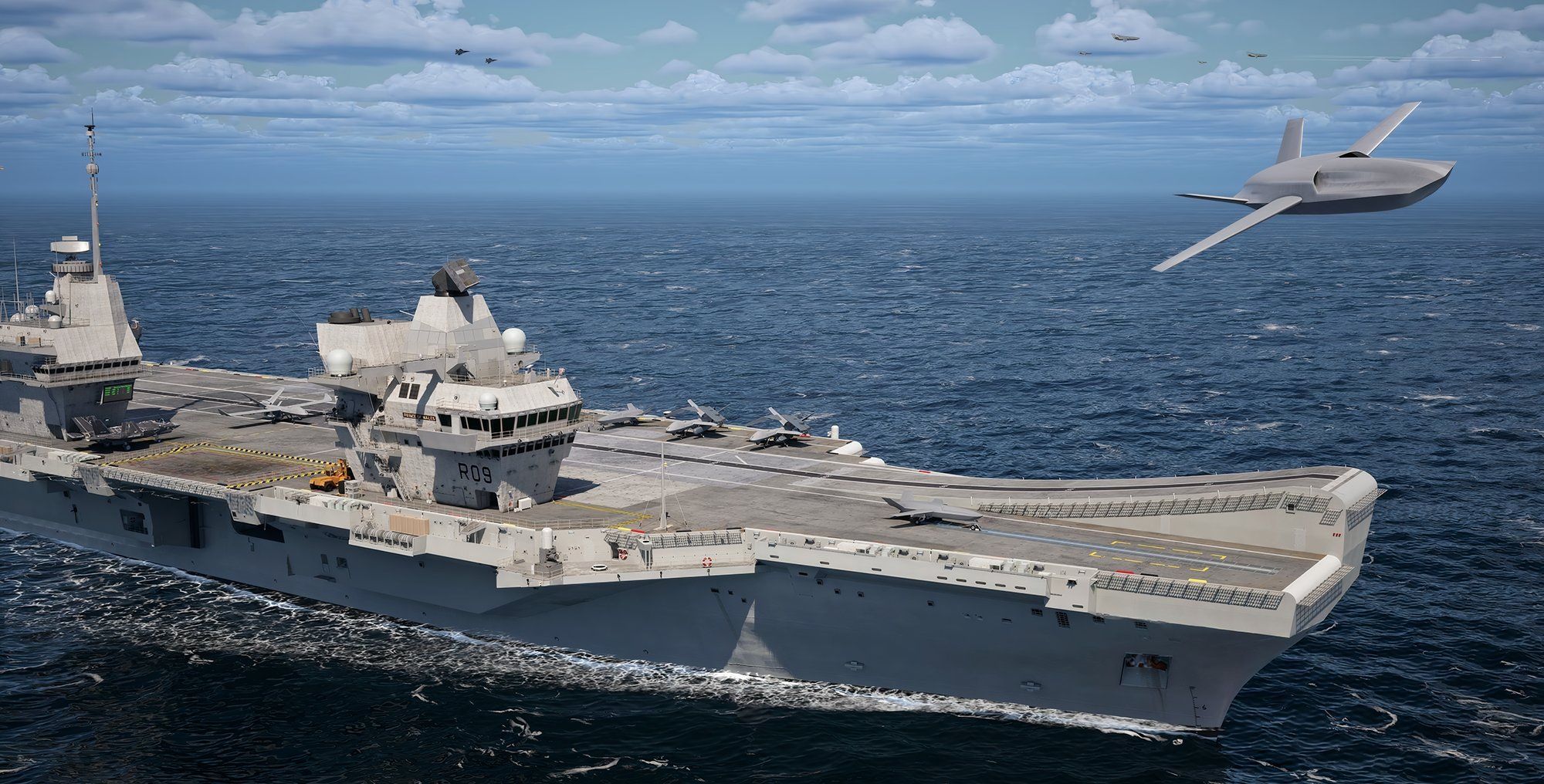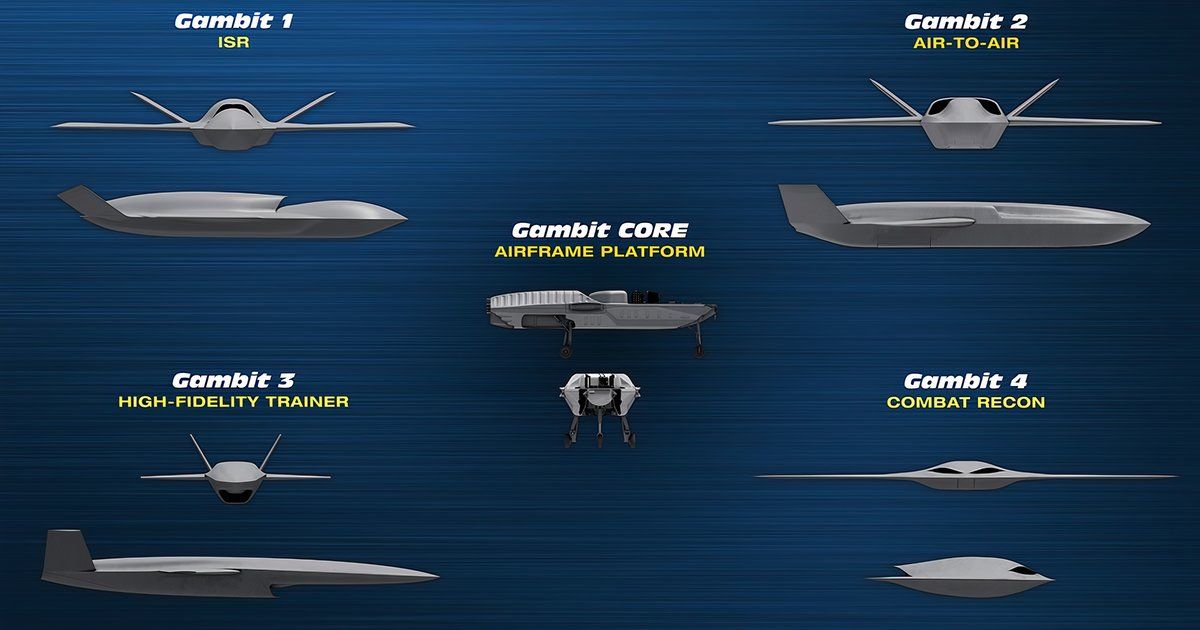Summary
- General Atomics offers Royal Navy Gambit drones for carrier operations, ensuring diverse airpower capabilities at lower costs.
- Gambit Series drones boast a common core platform, reducing expenses and promoting interoperability with other combat aircraft.
- The Royal Navy’s interest in Gambit 5, an air-to-air drone for aircraft carriers, reflects a shift towards cost-effective naval aviation diversity.
General Atomics is offering the United Kingdom’s Royal Navy the Gambit family of drones to launch off of the two Queen Elizabeth class aircraft carriers in the fleet. The British are currently using the aircraft carriers to launch maritime patrol helicopters and F-35B Short Take-Off and Vertical Landing (STOVL) low-observable fighter jets. However, General Atomics is offering the Gambit series of drones as a collaborative combat aircraft of sorts.
Why the collaborative combat aircraft drones?
General Atomics argues that,
“There’s no question that the work of air superiority is getting more difficult. Hostile stealth fighters are proliferating. New-generation integrated air defense systems are improving their ability to detect American and allied aircraft. Sophisticated adversaries want to push the joint force ever farther from contested territory and sharpen their ability to deny it if entered. All this challenges the Air Force, its sibling services, and their international allies to find new and innovative ways to outfly the enemy.
“So, they’ve got to break with tradition.”
So what is the Gambit family of drones that will break with tradition?
Introducing the Gambit family of drones
General Atomics, famous for the MQ-1 Predator and MQ-9 Reaper propeller land-based drones, has now launched a new product line of jet-powered low-observable drones in the Gambit Series. The Gambit Series is a family of four collaborative combat aircraft starting with Gambit 1 – an intelligence, surveillance and reconnaissance (ISR) platform, then Gambit 2 – an air-to-air combat aircraft packing a few air-to-air missiles. But that’s only the first two. There is also Gambit 3, a trainer that “will support sorties against some of the most capable U.S. systems, including U.S. integrated air defense systems, along with other current fifth-generation tactical air assets,” as General Atomics explains, and finally, a Gambit 4 flying wing combat reconnaissance model optimized for stealth. All four of the Gambit Series come with a common core.
What is this common core? As General Atomics explains on their webpage;
A core platform that encapsulates a single set of common hardware: landing gear, baseline avionics, chassis, and other essential functions. A common Gambit Core accounts for roughly 70 percent of the price among the various models, providing an economy of scale to help lower costs, increase interoperability, and enhance or accelerate the development of variants.
What the Gambit Series has on offer is a commonality that will reduce cost. Additionally, the Gambit Series is being pitched as a solution to the US Air Force’s quest for a collaborative combat aircraft (CCA) to be an uncrewed weapons and sensor platform to fly alongside fifth-generation and sixth-generation fighter jets and possibly other combat aircraft. For instance, a Gambit 2 air-to-air drone or two could escort an aerial refueling tanker or fly top cover over a maritime patrol aircraft.
Graphic: General Dynamics
Finally, some of Gambit has already been tested as the XQ-67A. The XQ-67A is intended to be an “Off-Board Sensing Station” as Gambit 1 and Gambit 4 are intended to be and have been in flight test since February 28. So, development risk is lower.
But why the Royal Navy interest?
General Atomics is offering a Gambit 5 that is a Gambit 2 – the air-to-air drone – optimized for aircraft carrier operations. Gambit 5 requires catapults, which will require installing catapults and arresting wires on the Royal Navy’s two ski-jump Queen Elizabeth-class aircraft carriers. But there have been years of discussion and planning towards making these additions to accommodate various drones to allow for cost-effective diversity in naval aviation capabilities.
Additionally, this General Atomics scenario appeals very much to UK defense leaders:
“Imagine a trio of Gambit 2 aircraft looking toward an enemy coastline from different altitudes at different angles. One of them detects an inbound hostile stealthy fighter. Gambit 2 immediately can cue its wingmen onto the target with their own sensors and confirm the track generated by the first one. All this might take place via infrared—meaning no telltale radio frequency emissions to tip off the enemy. The hostile fighter’s front aspect is designed to defeat radar returns, but that becomes irrelevant when it’s being tracked this way and from two or three different perspectives.
“This trio of Gambit 2 aircraft could do any number of things. They could alert human-piloted fighters farther away with a burst transmission. They could wave off to keep clear of the hostile fighter. They could attack with their own weapons using AI and machine learning to harass and trap the hostile fighter.”
Considering the high costs of F-35B Lightning II jump jets and training pilots to fly them, anything to give “valuable early warning and decision space” makes sense. Additionally, training a human to make an aircraft carrier landing is expensive, joyfully or painfully loud to fenceline communities, and puts stress on expensive airframes versus a drone that can be programmed to make an automatic landing.
Bottom line
The Gambit family of drones, if placed on Royal Navy aircraft carriers, will provide diverse airpower solutions for a blue-water navy and global power. As a family of drones, 70% of the drones will be standardized and reduce costs. Additionally, the costs of operating a family of drones is much cheaper than F-35Bs and will reduce combat and naval aviation risks to humans.


